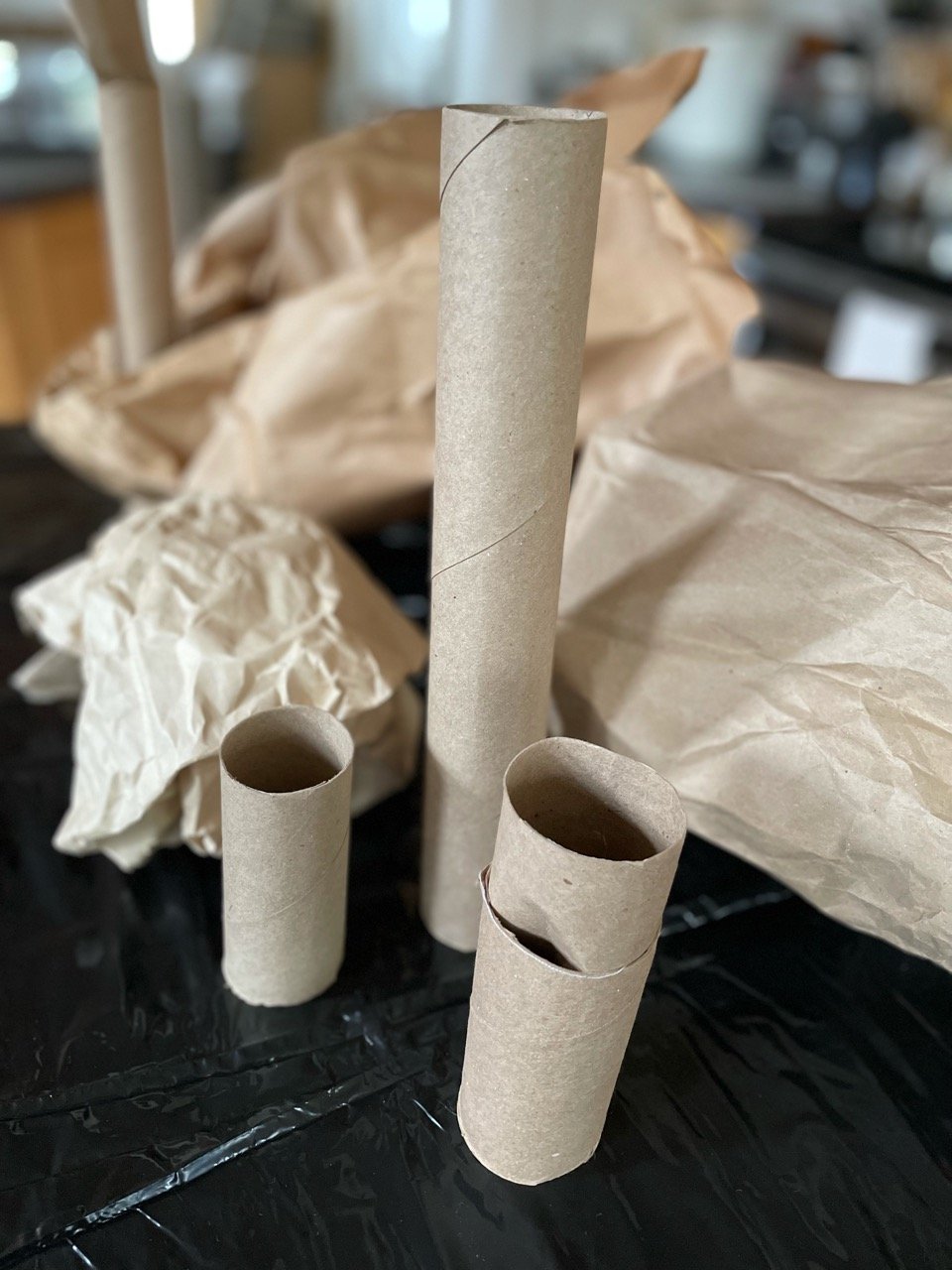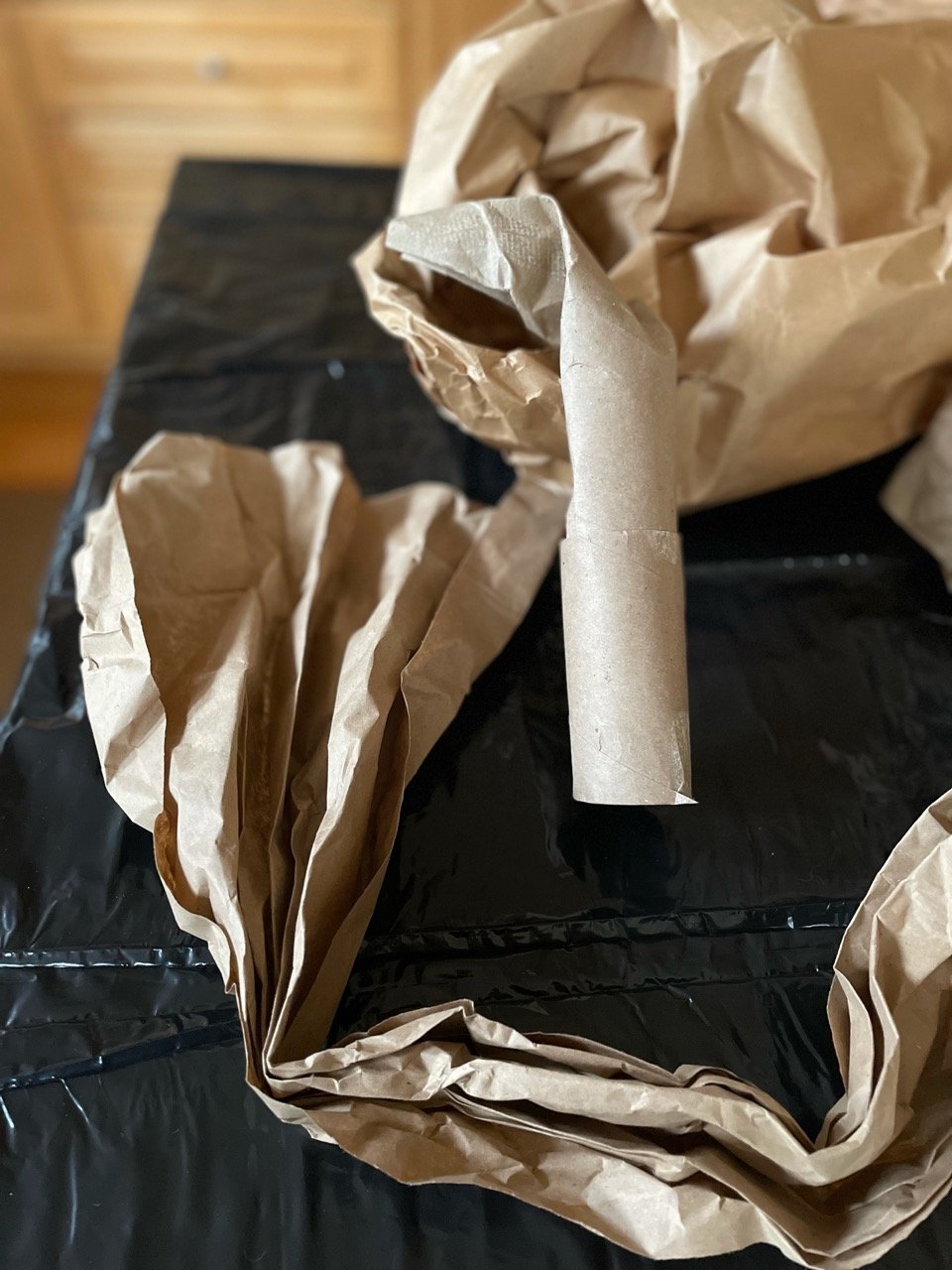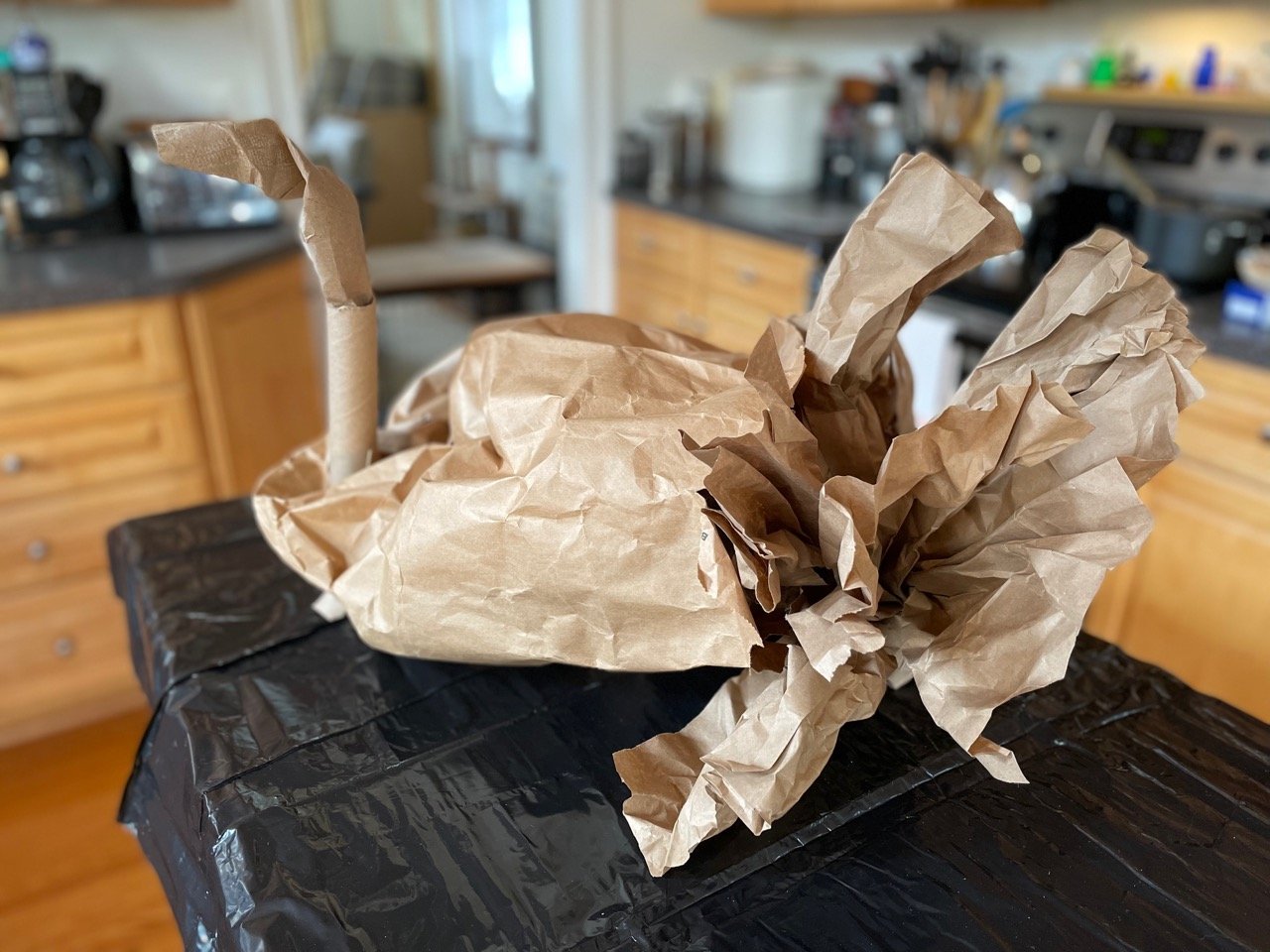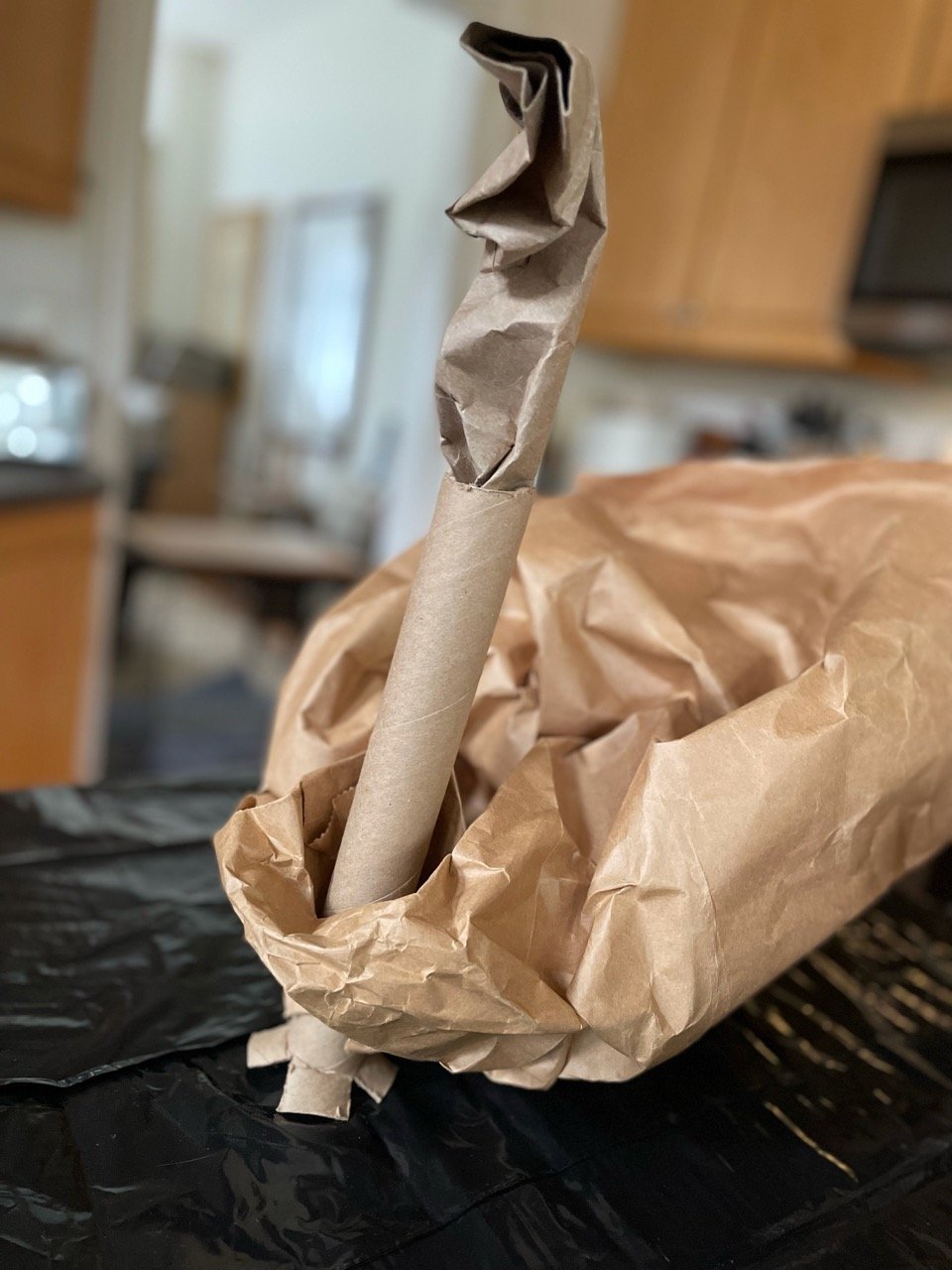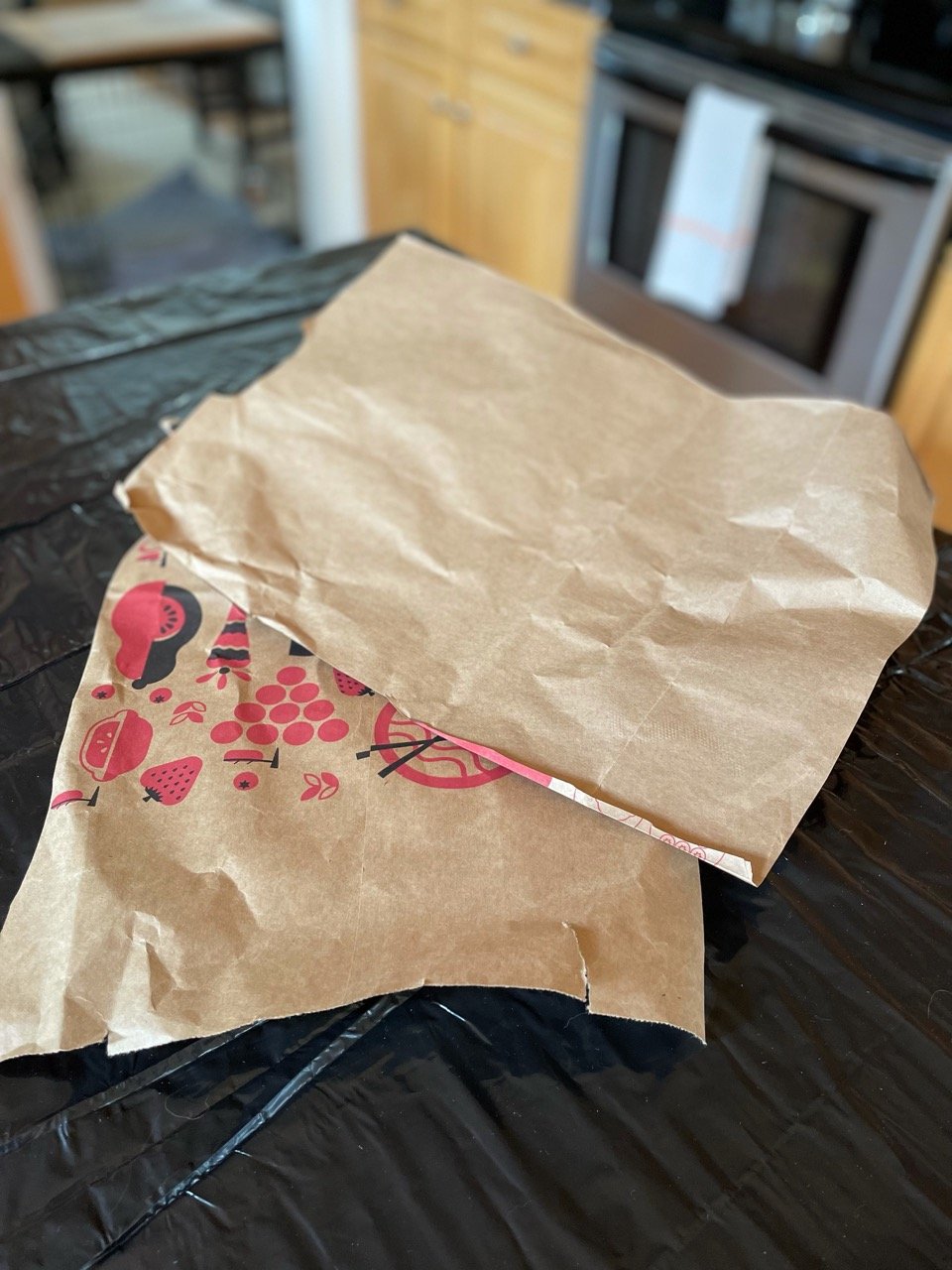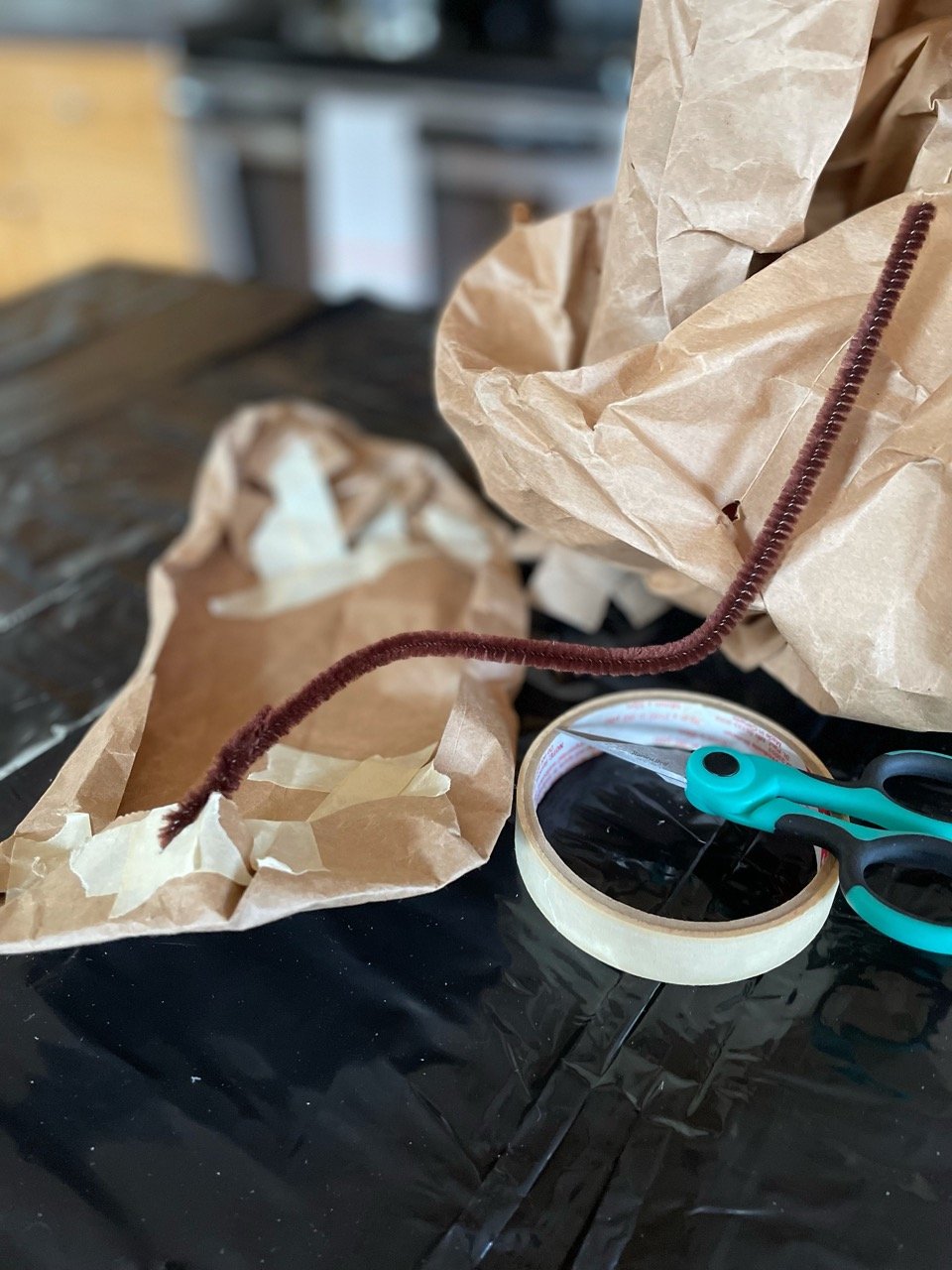upcycled easter
We are still loving the idea of using what you have on hand, re-using what can be given a second purpose, and cutting back as far as possible on cheap, imported, high carbon-cost decor. Bein’ that it is Spring and we turn to all things renewing, we are going entirely renewable. Take an old wool coat and rehabilitate it as your bunny!
This fellow is stuffed with chopped up, mismatched socks. The carrots are spindles, twine, and last year’s Easter grass combined.
Simple stamped cards to send your happiest thoughts. Stamp and embellish with markers, stickers, or paint.
Wool coat bunny showing the simple, sturdy construction.
We thought he looked a bit downcast, so we brightened him up with needle felted wool accents.
A leftover yarn “ribbon,” and Rabbit is ready!
recycle material turkey centerpiece
Friendsgiving, Black Friday Eve, Thanksalotapalooza…. however you are celebrating, it is fun to pay tribute to the bird most associated with the fourth Thursday in November, though turkey may or may not have been on the menu for the storied meal shared by the Plymouth Colonists and Pilgrims and the Wampanoag people indigenous to the area. Novelist Sara Josepha Hale popularized the idea of turkey as the main dish for Thanksgiving in the 1820’s with a campaign to make Thanksgiving a national holiday. We are presenting a budget friendly turkey for the center of the table that even your vegan friends and family will approve. Raiding the recycling, we have put together a step by step for a life-size gobbler— no brining, no basting, and no baking required!
You will need 3-4 regular paper grocery bags, kraft paper or kraft paper used for packing, toilet paper rolls and/or paper towel rolls, tape, and glue. A stapler helps expedite the construction — can be used as temporary holds while glue dries and removed later or hidden inside paper folds.
Starting with a kraft paper grocery bag, turn it inside out if it has any printing and puff it out to form the basis of the turkey body.
Using the paper towel rolls, scrunch the bottom of one to fit inside the body of another and another to form a support or armature for the turkey’s head and neck.
Checking length of the future tail against grocery bag body, cut to same length then accordion pleat or fold kraft paper or packing paper.
Gather pleated paper together tightly and secure with twine, string, or wire. We used a chenille stem.
Create a hole in the front of the grocery bag turkey body just large enough to pass the paper roll neck/head assembly through. We split the bottom into four flaps and folded them outwards to provide more stability.
Cutting basic kraft grocery bags apart provides working material for wrapping the neck and head, crafting wings and stuffing the body.
We wrapped the neck assembly with kraft paper, leaving excess at the top to form the head. Crush shape the head into an almond shape with a pinched point to make a beak.
Once the head is in a basic bird shape, glue down folds in the paper to refine. We used chenille stems to stabilize the head until the glue dried.
Taking a cut out side of a kraft paper bag, crush curve the edges to form an oval to attach across the front of the turkey to build out the breast and help hide the mechanics of the paper tube at the bottom of the neck. Tape down the crush rolled edges of the oval. We reinforced spots on each edges of the oval, made an opening, and ran a chenille stem from side to side behind the paper roll neck so the wire can draw tight to be stable.
In the this photo, you can also see the twist of paper added, draped over the beak, to form the distinctive turkey wattle.
Turning to the rear of the turkey, we balled up heavy kraft paper give the body substance, and added pillars of toilet roll paper columns to increase stability in the interior.
Splay out the fans of the accordion pleated paper to form the tail. It helps the paper to stand to attach edges of individual fans together. We made two layers of paper fans so the tail is really full. We attached the tail with brass brads — but could have used tape or glue. As the tail stands by itself, it could be set behind the body sitting as a centerpiece without being attached.
Wings on turkeys are sort of useless, but as a design element on a centerpiece, they add a lot! We cut kraft grocery bags into wing shapes and add symmetrically matching sections imitating rows of feathers, gluing them one over the other. Before gluing, we folded the faux feathers down the center to add textural interest and a give a more featherlike appearance.
Once the layers of feathers were glued and the glue dry, we crushed rolled the outer edges of the wings— the non-feathered edges — to add dimension. We attached the wings with brass brads— but tape or glue works as well
(Hint: clothespins make great tools for softly holding paper edges while glue dries.)
Tom on the table showing the layers of paper added at the front to fill in any gaps, hide any mechanics or attachments and imitate a turkey’s feathered breast.
fast halloween costume: recycled robot
We know it is on the calendar on the same day EACH year… not like Easter, which wanders around Spring dependent on moons and traditions. It’s not like we have to sing the “30 Days HATH September” song. This is it. The BIG 31… we are yapping on about Halloween, of course. October 31st. HELL—ooo: All Hallow’s Eve. A super holiday for Creatives everywhere where it is celebrated. And yet…EVERY year we get down to the wire with what the heck are we going to wear? Or send the kids out in? (And, oh shoot, need to buy some candy— but not TOO soon or it won’t make it to the big day! We are looking at you, Reese’s peanut butter cups.)
For fun, fast and easy costumes, rev up your imagination and raid the recycling bin and kitchen drawers! Here is a tutorial for Robbie, the Recycled Robot. Your guy can and should look different— just use what you have and what you find in the back of the pantry or the Everything Drawer in the kitchen— you know you have one!
Step 1— Assemble some likely materials and create a work space.
In order to create our Robbie Robot costume, we cut the sides out of two kraft paper grocery bags, turned them inside out so no writing was visible and taped them together. It helped to visualize the design to lay the costume robot “tunic” over a sturdy cardboard box turned on its side. We covered two of the cut out sides of the grocery bags in aluminum foil. They will become the adjustable sides of the robot. Then we covered the sandwiched bags that form the front and back of the robot in foil, leaving the top uncovered as that part will be cut out and folded back to fit over the costume wearer’s head.
Grocery bag sides being covered in foil and tape.
Covering the bag “tunic” with foil and tape. It was helpful to have silver duct tape, but regular invisible tape would work as well! We put a dinner plate down on the top of our tunic to draw the circle that will be cut out to go over the head.
The idea is for the creator to enjoy the PROCESS without seeking perfection!
We pulled some things from the pantry, kitchen drawers, wrapping pile, and garage to create robot decoration— reflective material is a bonus for night time trick or treating!
Our fast process for creating Robbie the Robot is great for kids, but can be adjusted for older kids and grown ups.
When all the grocery bag “tunic” is securely covered with foil and tape, cut into the dinner plate circle at the top and carefully fold back the edges to the inside of the “tunic." Secure the edges all the way around with tape.
At this point, try the tunic on the costume wearer to make sure the opening at the top is wide enough to slip over the head. Also, hold up the two foil-covered side pieces to the edge of the base of the front of the “tunic.” Wrapping each side piece towards the back of the “tunic” on the wearer, mark where the the side pieces land on the back. This is where an attachment will be placed so that the costume fits securely and can be removed. We used large chenille stems curled on the back side of the “tunic" and poked through to the front and then through each side piece. A simple curl of the chenille stem forms a removable “button” holding the sides in place!
Using duct tape for a secure hold, we attached a recycled styrofoam box lid over a small LED light string, reflectors and other bits to add to Robbie’s verisimilitude — but anything or nothing will do! (“tunic” shown draped on top of the a sturdy cardboard box to check placement)
Add simple robot makeup or an aluminum foil covered headband for a young child and Robbie is ready to rock out the door in this low cost, simple, adjustable and lightweight homemade Halloween costume!
life cycle of a centerpiece
Sadly we have all learned this week that we are not saving the planet by switching to aluminum straws and filling the recycle bin… it will take a whole concerted effort on all our parts to move in the right direction. Not giving up hope — nor abandoning filling that bin — but definitely looking for ways to mobilize political action to combat climate change. In the meantime, we are using and reusing what we find at home, in the front yard, and within a short mile radius in order to limit purchasing goods that are created and transported at a huge human cost and worse carbon footprint. Herewith a centerpiece that went to a party, came home to chill with the fam, and will go on to serve yet one more purpose!
Boasting more lovely toasty tones and harvest grains than a bowl of granola, this sunny centerpiece looks great in copper. We upped the interest by clustering some intriguing fall flavored shapes at the base.
Natural wood tone toad stools and a printed paper Monarch— we think the whole package is the Autumnic bomb.
The next stage in the life of these material will play out as the natural elements dry to a preserved state to be used in the near future!
To be continued…right after we are done phone banking the entirety of Congress about Climate Change.











